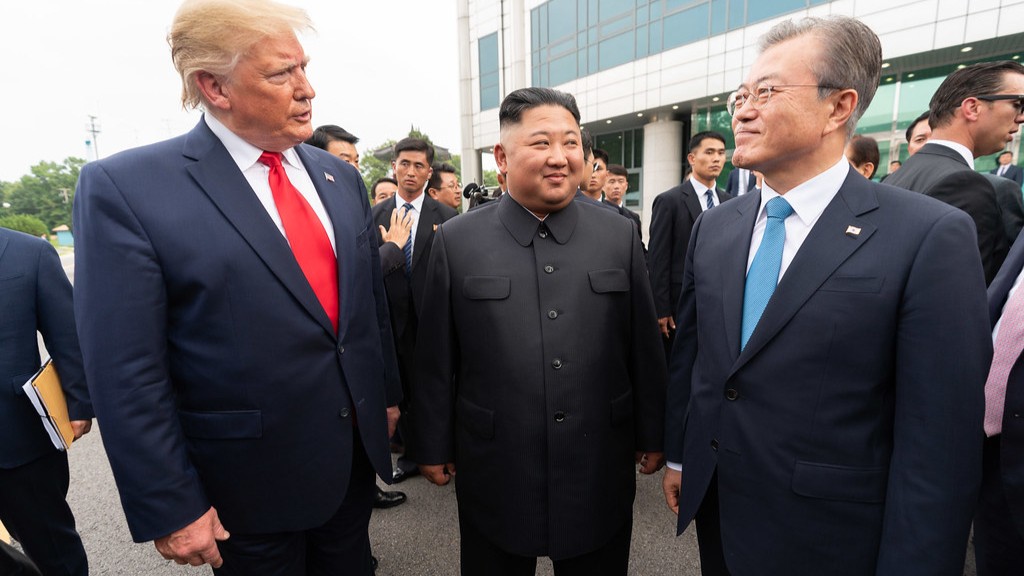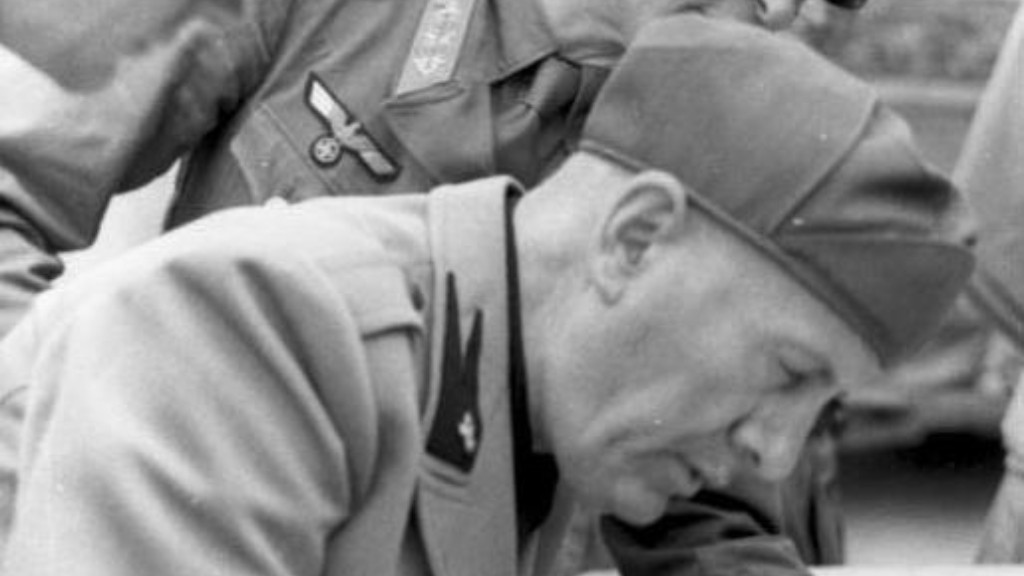The United States overthrew the Saddam Hussein regime in Iraq in 2003 for a variety of reasons. These include:
-The belief that Saddam Hussein was developing weapons of mass destruction and was a threat to the US and its allies.
-Saddam Hussein’s support for terrorist organizations.
-The desire to establish a stable, pro-Western government in Iraq.
-The need to secure access to oil resources in the region.
The primary reason for the overthrow of Saddam Hussein was his refusal to comply with UN resolutions demanding that he disarm and destroy his chemical and biological weapons and long-range missiles.
Why did the US want to take down Saddam Hussein?
The Iraq War was a devastating conflict that lasted for over a decade. Tens of thousands of people were killed, wounded, or affected by the conflict. More than two million people were displaced, as well. The primary rationalization for the war was articulated by a joint resolution of the United States Congress known as the Iraq Resolution. The US claimed the intent was to “disarm Iraq of weapons of mass destruction, to end Saddam Hussein’s support for terrorism, and to free the Iraqi people”. However, many believe that the true motivations for the war were more cynical, such as the desire to control Iraq’s oil resources or to establish a foothold in the Middle East. Whatever the reasons for the war, it was a disaster for all involved.
In response to Iraq’s refusal to withdraw from Kuwait, the United States and the UN Security Council authorized the use of military force to drive Iraqi troops out of Kuwait. The resulting Persian Gulf War was a resounding success, with coalition forces quickly driving Iraqi troops out of Kuwait.
What did the US do to Saddam Hussein
Saddam Hussein, the deposed president of Iraq, was captured by the United States military forces in the town of Ad-Dawr, Iraq on 13 December 2003. Codenamed Operation Red Dawn, this military operation was named after the 1984 American film Red Dawn.
Saddam was captured while hiding in a hole in the ground, and was found with a pistol and $750,000 in cash. He was taken into custody without incident, and was later tried and executed for his crimes against the Iraqi people.
This operation was a major victory in the War on Terror, and helped to bring stability to Iraq after years of chaos and violence.
The American views towards Iraq during its conflict with Iran were not very supportive. The main reason for this was to prevent an Iranian victory. This was encapsulated by Henry Kissinger when he remarked, “It’s a pity they both can’t lose.”
Why did America go against Iraq?
The United States based most of its rationale for the invasion on claims that Iraq had a weapons of mass destruction (WMD) program and posed a threat to the United States and its allies. Additionally, some US officials accused Saddam of harbouring and supporting al-Qaeda.
The legality of the invasion and occupation of Iraq has been widely debated. The then United Nations Secretary-General Kofi Annan said in September 2004 that: “From our point of view and the UN Charter point of view, it [the war] was illegal.”
There are a number of arguments that have been put forward in support of the legality of the invasion and occupation of Iraq. Firstly, it has been argued that the UN Security Council resolutions passed in the lead-up to the war authorized the use of force. Secondly, it has been argued that the war was in self-defence, as Iraq was in breach of its obligations under the UN Charter and had failed to comply with previous UN resolutions. Thirdly, it has been argued that the war was a humanitarian intervention, as the Iraqi government was committing human rights abuses against its own citizens.
However, there are also a number of arguments that have been put forward in opposition to the legality of the war. Firstly, it has been argued that the UN Security Council resolutions did not authorize the use of force, as they did not explicitly mention military action. Secondly, it has been argued that the war was not in self-defence, as Iraq was not posing an imminent threat to the security
Why did the US start the Gulf War?
The George H W Bush administration invaded Iraq in order to secure US interests in the Persian Gulf region, specifically oil. This would lead to further US military involvement in the region in order to protect these interests.
The three most serious reasons for American involvement in the Middle East are oil, order, and weapons proliferation. Oil is the most tangible interest, though not necessarily the most important. Oil provides about 40 percent of American energy, and about 45 percent of this oil is imported. order is also an important interest for the United States. The Middle East is a major source of instability in the world, and the United States has a vested interest in maintaining stability in the region. Weapons proliferation is also a major concern for the United States, as many of the weapons in the Middle East are in the hands of states that are hostile to the United States.
Why is Kuwait important to the US
Kuwait is an important partner to the US in the fight against terrorism. It is a member of the Global Coalition to Defeat ISIS and hosts the headquarters of Combined Joint Task Force – Operation Inherent Resolve. Kuwait is also working to block financing of terrorist groups.
The 2003 invasion of Iraq began on March 20, 2003 and lasted for 1 month, 1 week and 4 days. The United States led a coalition of forces into Iraq with the stated goal of deposing the Ba’athist government of Saddam Hussein and occupying the country. The invasion resulted in the overthrow of the Ba’athist government, the occupation of Iraq by coalition forces, and the start of the Iraq War.
Who owns the oil in Iraq now?
The Iraq Petroleum Company (IPC;Arabic: شركة نفط العراق Shirka Natex El Iraq) was an oil company which was based in the Middle East. It was founded in 1929 by Calouste Gulbenkian, and was later owned by several other oil companies, including BP, Royal Dutch Shell, ExxonMobil, TotalEnergies, and Partex.
The purpose of this note is to provide information on the sale of helicopters from the United States to Iraq, as well as the covert support the US provided to Saddam Hussein.
The sale of helicopters took place during the Iran-Iraq war, in which the US saw Iraq as a counterbalance to the Iranian regime. The helicopters were used by the Iraqi military in the war and were the only direct US-Iraqi military sales.
At the same time, the US provided substantial covert support for Saddam Hussein. This support included supplying Iraq with intelligence, funding, and weapons. The US also provided diplomatic support, helping to block international condemnation of Iraq’s human rights abuses.
The sale of helicopters and the covert support for Saddam Hussein were both part of the US strategy to contain Iran. This strategy changed after the 9/11 attacks, when the US began to see Iraq as a potential threat. The US invaded Iraq in 2003, leading to the overthrow of Saddam Hussein’s regime.
Why did the US become enemies with Iran
The United States attributes the worsening of relations with Iran to the 1979-1981 Iran hostage crisis, Iran’s repeated human rights abuses since the Islamic Revolution, its anti-Western ideology and its nuclear program.Since 1995, the United States has had an embargo on trade with Iran.
The Iran-Iraq war was a bloody conflict that was exacerbated by American involvement. America’s support of the Kurds was just one of Saddam Hussein’s concerns. Ultimately, American involvement contributed to lasting political insecurity in the region.
What did Saddam Hussein want from Iran?
There are two main theories as to why Saddam Hussein decided to invade Iran in 1980. The first is that he saw an opportunity for geopolitical gain and took advantage of it when international factors were in his favor. The second is that he invaded to prevent Iran from fomenting revolution in Iraq. Each of these theories has some evidence to support it, but it is likely that a combination of both was at play in Saddam’s decision-making.
The United States imported an average of 157,000 barrels of petroleum per day from Iraq in 2021. This represents a significant decrease from the 2.6 million barrels per day imported in 2019, which was the highest level in over 20 years. The decrease is largely due to the outbreak of the coronavirus pandemic in 2020, which led to a decrease in global demand for oil.
Conclusion
The United States overthrew Saddam Hussein in 2003 for a variety of reasons, chief among them being his brutal dictatorship and his history of aggression against his neighbors. Saddam Hussein also posed a threat to U.S. interests in the Middle East, particularly after he began flouting international sanctions and resumed his pursuit of weapons of mass destruction.
In 2003, the United States led a coalition of countries in an invasion of Iraq with the stated aim of overthrowing the government of Saddam Hussein. There were a number of reasons for this, including Hussein’s hostility towards the US, his support for terrorist organizations, and his development of weapons of mass destruction. In the end, the US was successful in toppling Hussein’s regime, but the ensuing years have been marked by turmoil and instability in Iraq.





